Development of 3kV-Class Gallium Oxide Epitaxial Layer and Device Technologies
- Development of next-generation power semiconductor core technologies, breaking away from foreign dependency.
- Halving device size while increasing performance tenfold and cost competitiveness twentyfold.
- Applications in power transmission and distribution networks, high-speed trains, data centers, quantum computing, and electric vehicles.
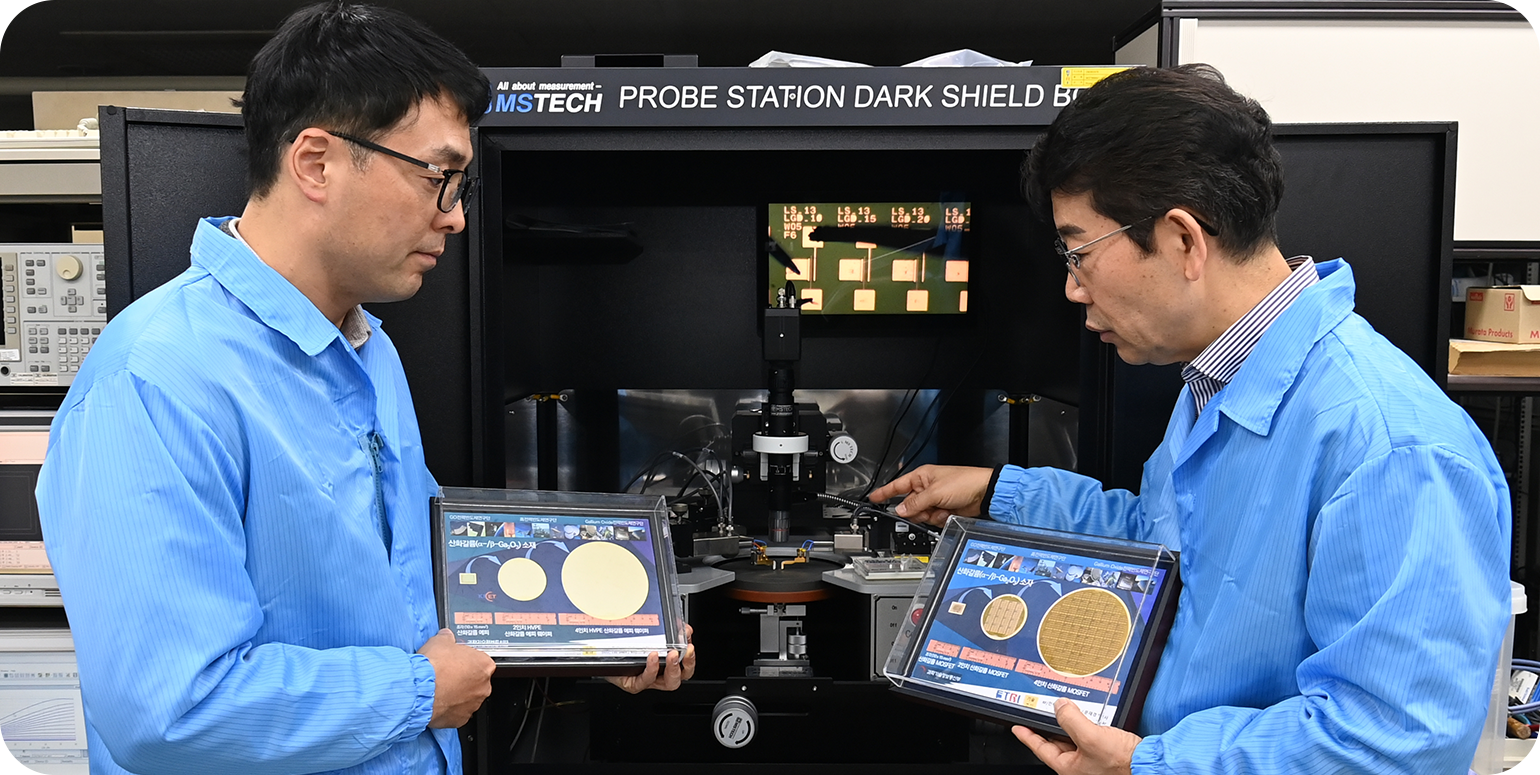
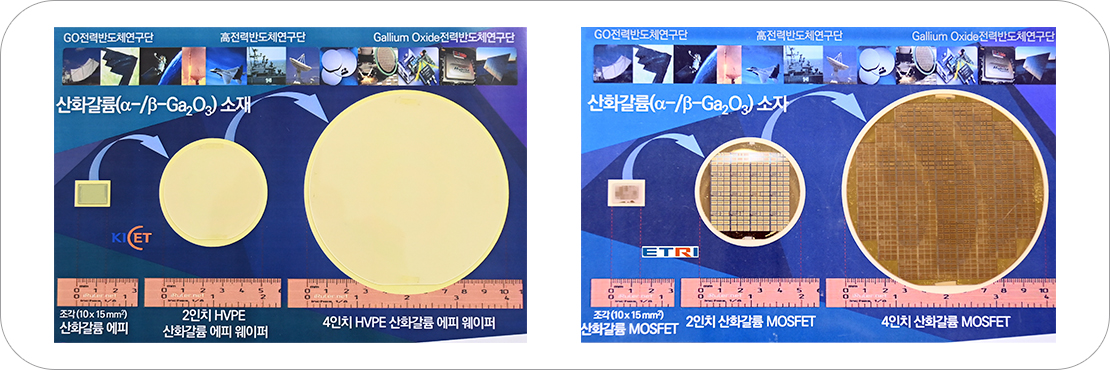
Gallium oxide epitaxial wafer for high-efficiency power semiconductor (Left) and Power semiconductor MOSFET (Right)
(Size: Piece → 2-inch → 4-inch)
Electronics and Telecommunications Research Institute (ETRI) of Korea and its research team have successfully developed core material and device process technologies of gallium oxide (Ga2O3) power semiconductors, called as the next-generation power semiconductors. Gallium oxide is a key material for next-generation power semiconductors that has been actively researched worldwide. Japan and the United States have held technological superiority in this field, but this technological development has narrowed the gap.
ETRI, in collaboration with the Korea Institute of Ceramic Engineering and Technology (KICET), announced the successful development of 3kV-class* gallium oxide power semiconductor Metal-Oxide-Semiconductor Field-Effect Transistor (MOSFET**) device technology for the first time in Korea. Notably, this achievement represents a successful case of research and development where commercialization technology has been systematically linked and developed within a singularly attempted platform-type research group project, a first of its kind globally.
Power semiconductor devices are one of the 12 national strategic technologies related to materials, components, and equipment. They are essential components used across national industries, including mobile and quantum communications, electric vehicles, solar and wind power generations, power transmission, defense, aerospace, and quantum computing. Currently, more than 95% depend on imports from abroad.
Therefore, the localization of next-generation gallium oxide power semiconductor materials and device technologies holds significant importance from the perspective of achieving self-reliance in national strategic technologies.
The growth of gallium oxide epitaxial*** layer technology successfully developed by the research team involves a process of growing multiple layers of high-quality conductive thin films on a single-crystal substrate.
Dr. Jeon Dae-woo’s research team at the Korea Institute of Ceramic Engineering and Technology has successfully localized the high-quality beta gallium oxide epitaxial growth technology using Metal-Organic Chemical Vapor Deposition (MOCVD****), which is anticipated globally as a mass production technology for large-diameter epitaxial wafers.
This technology enables the growth of epitaxial layers with thicknesses ranging from nanometers (nm), one-billionth of a meter, to micrometers (µm), one-millionth of a meter. It also allows for a wide range of adjustments in electron concentration. Consequently, this facilitates the development of power semiconductor devices with various voltage and current capabilities, bringing us closer to mass production technologies.
Furthermore, the gallium oxide device process technology additionally developed by the research team represents a wafer-scale integration process technology for fabricating large-size power semiconductor devices. This technology encompasses the formation of micro-patterns on the epitaxial layers of Ga2O3 substrate, low-damage etching, deposition, and thermal processing.
* The 3kV class refers to a voltage level applicable to urban rail, subways, and ultra-fast electric vehicle chargers. By incorporating gallium oxide 3kV class power semiconductors into ultra-fast electric vehicle chargers, it is possible to significantly reduce charging times from the 30-minute range to less than 20 minutes.
** MOSFET (Metal Oxide Semiconductor Field Effect Transistor): A type of transistor that functions as a metal-oxide-semiconductor field-effect transistor.
*** Epitaxy: Refers to a crystal layer that has grown on a crystal substrate with specific orientation. By adjusting the doping concentration in the epitaxial layer, electrical conduction or insulation can be achieved. Generally, as the doping concentration in the epitaxial layer decreases and the layer becomes thicker, both voltage and resistance increase.
**** Metal-Organic Chemical Vapor Deposition is a critical process technology for commercializing epitaxial materials, utilized to grow high-quality epitaxial layers necessary for the fabrication of high-performance semiconductor devices.
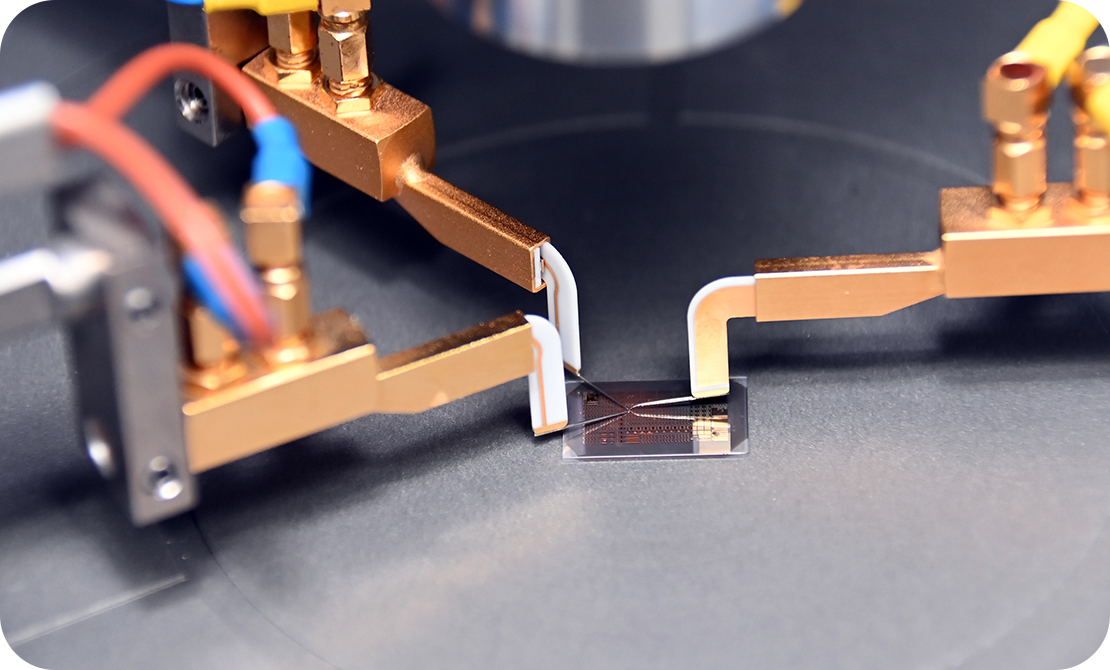
A piece of Ga2O3 power semiconductor MOSFET device developed by the joint research team of ETRI and KICET
Dr. Mun Jae-kyoung’s research team at ETRI has successfully developed a superior performance 3kV-class MOSFET device using the epitaxial layers directly developed by the KICET research team, rather than commercial epitaxial layer on single crystal wafer imported from Japan.
Above all, a new epitaxial structure capable of reducing leakage current to the level of picoamperes (pA), one-trillionth of an ampere, was developed. Furthermore, the achievement includes the development of new device and process technologies that significantly enhance the breakdown voltage to exceed 3kV.
The localization of gallium oxide power semiconductor technology is of paramount importance for enhancing next-generation global competitiveness and preempting new markets, especially in a context where the majority of wide bandgap (WBG*)** power semiconductor technologies, such as gallium nitride (GaN) and silicon carbide (SiC), currently rely on overseas sources.
The research team has stated that the development of gallium oxide epitaxial layers and power semiconductor MOSFET technologies can reduce manufacturing costs to one-third to one-fifth compared to existing power semiconductors. This reduction in cost through localization enables South Korea to take a leading position in the high-value-added industry of next-generation power semiconductors.
Moreover, gallium oxide semiconductors exhibit superior material properties, enabling them to withstand higher voltages. This not only allows for a reduction in the size of power semiconductor devices by 50% or more, facilitating miniaturization, but also improves power conversion efficiency. Consequently, the performance of power semiconductor devices can be enhanced by more than tenfold, thereby increasing the price competitiveness of these devices by more than twenty times compared to existing power semiconductors.
The research team explained that gallium oxide power semiconductor devices could not only enhance power conversion efficiency but also significantly reduce the size of inverter and converter systems to less than one-tenth of their current dimensions.
* Wide (broad): Semiconductors with a very large energy bandgap (Eg) size of 2eV or above. Gallium nitride and silicon carbide are representative examples of commercial semiconductors.
** Band gap: The energy gap between the filled valence band and the conduction band in a material. Materials where the valence band and conduction band overlap are conductors; those with a small gap are semiconductors, and those with a large gap are insulators.
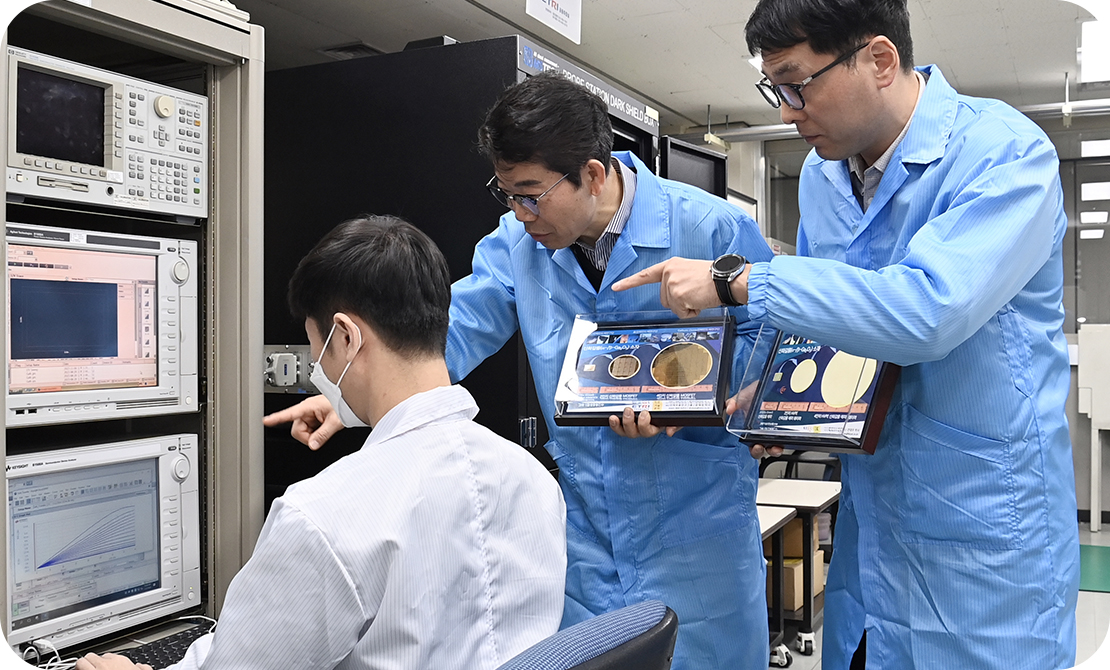
It is anticipated that applying these devices to the high power industries, such as power transmission and distribution networks, high-speed railways, data centers, quantum computers, and electric vehicles, will substantially increase energy-saving effects.
ETRI is currently focusing on the world’s first development and commercialization of a 4-inch gallium oxide power semiconductor MOSFET device process using a plating process with a thickness of 4 microns. Thus, it is expected that the acquisition of mass production technology for gallium oxide power semiconductors, utilizing domestically developed 4-inch large-area epitaxial materials and device process technologies will also be possible in near future.
According to a 2023 report by Japan’s Yano Research Institute, the global power semiconductor market is projected to grow to approximately 49 trillion KRW by 2030, with the gallium oxide market expected to reach 1.7 trillion KRW.
Dr. Jeon Dae-woo, a senior researcher at the Korea Institute of Ceramic Engineering and Technology, stated, “The localization of gallium oxide epitaxial wafers, which are key components of next-generation power semiconductors, will enable a reduction in the epitaxial wafer cost, which are over 40% of the manufacturing costs of domestic power semiconductors and achieve material independence.”
Dr. Mun Jae-kyoung, the project general manager at ETRI, stated, “We anticipate the timing for the integration of gallium oxide power semiconductors into systems to be further accelerated. We plan to be the first in the world to commercialize kilovolt-class gallium oxide power semiconductor MOSFET devices.”
Since initiating a project in 2017 for the development of strategic core material technologies under the Ministry of Trade, Industry and Energy, Dr. Mun Jae-kyoung has established and led the Korea Gallium Oxide Technology Research Association. This research achievement was made through the “Several kV high efficiency ultra small power semiconductor core material technology” project, a part of the National Core Material Research Group platform project under the Nano and Materials Technology Development Program of the Ministry of Science and ICT, conducted in 2020.
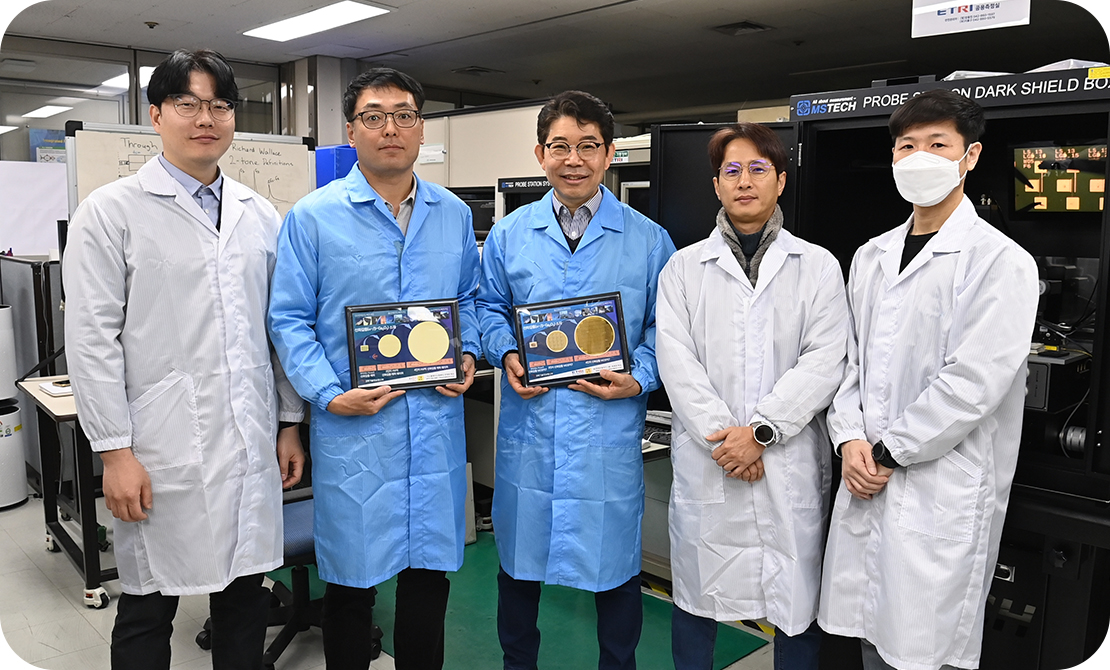
Mun Jae-kyoung, Principal Researcher
Quantum Sensing Research Section
(+82-42-860-6252 jkmun@etri.re.kr)
 Previous
Previous